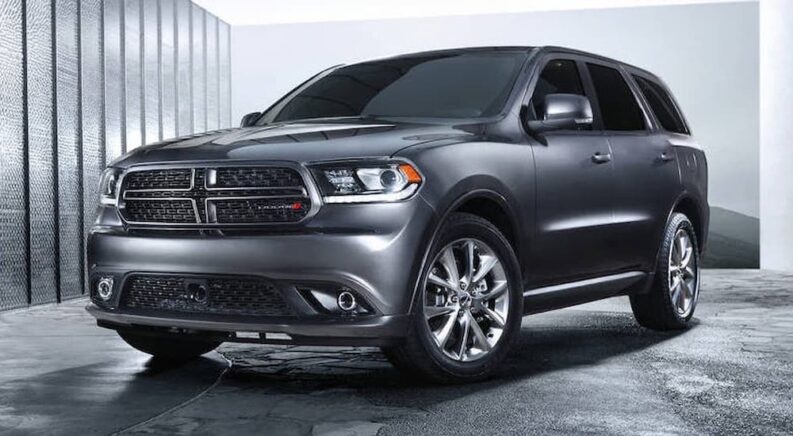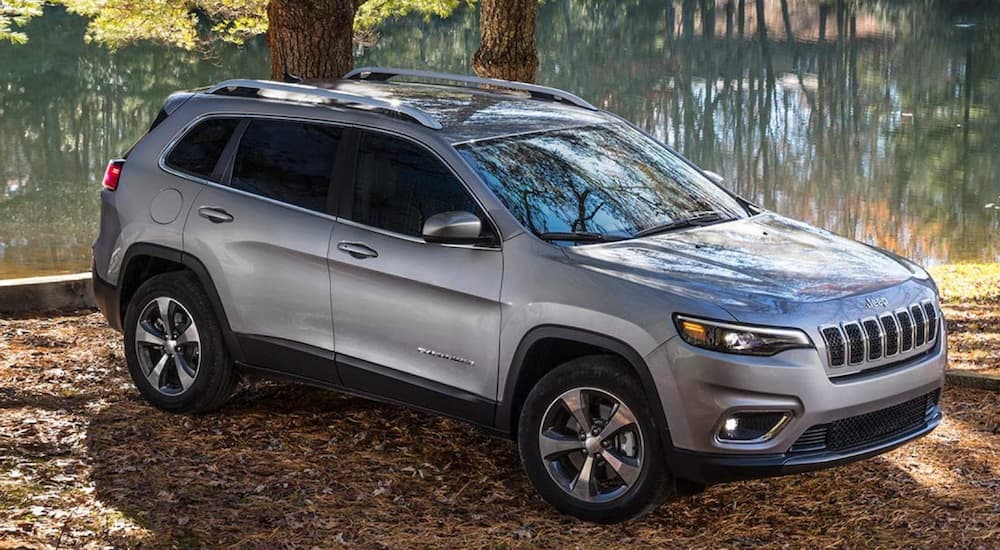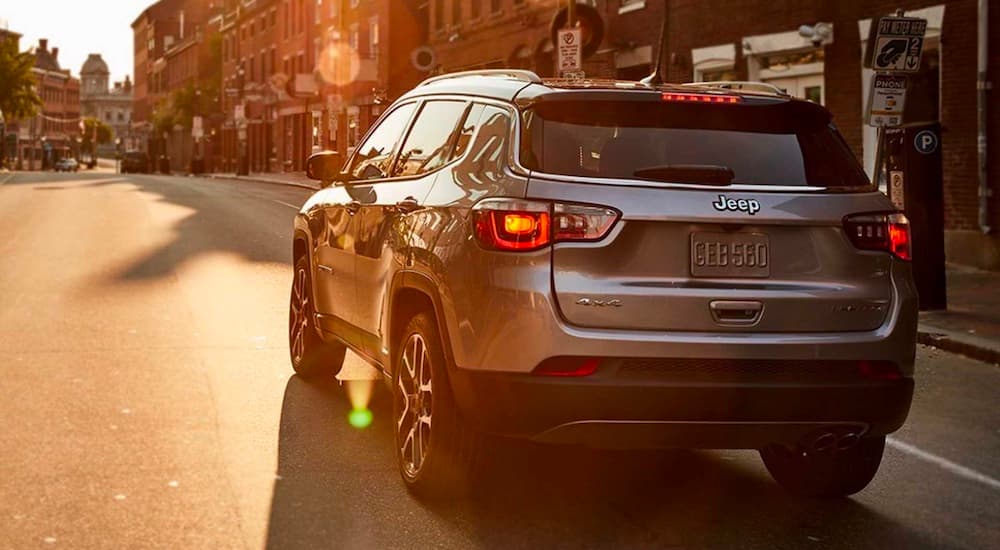An SUV is one of the most popular styles of vehicle these days. Ideally, an SUV—or sport utility vehicle—can carry a decent amount of both passengers and cargo, in addition to having light to medium off-roading capabilities. A pickup truck likewise has lots of cargo space, but its exposed bed means your usage is dependent on the agreeableness of the weather. A sedan prioritizes the comfort of its passengers but can, at most, seat only five people. SUVs make the best of both worlds, as they will have at least five spacious seats—if not seven or eight—as well as a deep well of rear storage. The back two rows can typically be folded down to further expand the amount of cargo space, should you need to haul significantly larger items or payloads in one trip.
Another point in favor of a good SUV is most have 4WD or AWD options, which allow for the ability to travel off-road, enabling SUV owners to reach obscure or difficult locations, be it for deep forest camping, ascending a mountainside, or crossing arid shrublands. The rugged quality of SUVs helps them function strongly in many such situations, and the best way to acquire an SUV purpose-built for your unique demands—and without breaking the bank—is to scour a used SUV dealer for a slightly-outdated high-end model, thereby netting you the perks of a pricey trim without having to sell one of your limbs to buy a comparable model brand-new.
Why Buying Used Just Makes Sense
Buying a new vehicle allows you to pick the exact model, trim, and color you want, and even add custom features to make your SUV the only one like it. So why would anyone buy a used SUV? Well, used vehicles are priced much more affordably. A new SUV could cost you anywhere from $40k to six figures, whereas a used vehicle will cost a fraction of that. While, in the past, a vehicle was considered well-used if it had 100,000 miles on it, modern vehicles can last for much longer. Most vehicles these days easily get to 200k with only basic maintenance. Some of the more reliable brands can provide 300k+ miles with only a little bit more than routine upkeep. What this means for buyers is that most people will grow tired of their vehicle well before it is worn out.
Most used vehicles will be in great shape for years after their initial purchase. Some used SUVs may have imperfections, like some wear and tear on the paint job, they may need tires soon, and maybe some other minor issues, but most vehicles are pretty well taken care of—and before dealerships put a pre-owned vehicle on their lot, they first ensure everything is functioning well and that, if it is missing any parts, they will replace them themselves or will sell the vehicle at a discount. So many used vehicles sell well because most people understand they are a great way to stretch their dollar. Sure, they may not have the new car smell, the exact color they wanted, or one particular feature, but they are an affordable way to get a functional ride that will last them for several years.
Many used SUVs, too, had been specialized for off-roading, with a tailored suspension, large tires, and skid plates, so you can get a rock crawler or a sagebrush savage for far less than you’d pay for new. Another feature many modern SUVs have is a driving mode for their AWD, which optimizes the off-road performance by adapting to the road conditions. Rain, snow, mud, and gravel are a few of the standard drive modes included in many SUVs.
A Good Used Dealership is Hard to Find
Historically, used car salesmen have had a bad reputation, often being the analog for an untrustworthy individual. In the twentieth century—and occasionally even today—used car salesmen were known to obscure defects, conceal major flaws, and pressure customers into buying something inoperable simply to make the sale. Thankfully, this breed of salesman has become the fringe minority. Most car dealerships today are reputable, selling only quality used vehicles and at a fair and reasonable price—because, frankly, that’s what’s best for business, particularly in the age of the internet review.
Google is a simple and thorough source for information and reviews on the majority of car dealerships. If you want to know what others who have used the dealership think about your prospective seller, make sure to do your research and review these reviews. Read both positive and negative reviews to get a sense of how honest they are and how well they do business. Pretty quickly, you can find out if a dealership is a good one to check out or one to steer clear of; look for key phrases like “pushy,” “rude,” or “car broke on the ride home.”
A good dealership has a sales staff who don’t pressure their customers to buy when it isn’t a good fit. They have a staff who is familiar with and knowledgeable about all their inventory. They should be friendly and want you to walk away satisfied; that way, you come back and buy from them again in the future. Yes, salesmen want to make money—that is, after all, their job—but GOOD salesmen understand the best long-term strategy is to create happy customers. The best dealerships can also provide fair financing options for their used SUVs—and never forget that pretty much every dealership, regardless of their name brand, deals in many makes of used vehicles.
The Journey to a Great Used SUV
Finding a great used SUV can be achieved by following some simple steps. Firstly, doing adequate research is essential. Understanding what the needs are for the vehicle will dictate which options will work well for the buyer. If the SUV will be primarily for a daily commute but also long trips into the wilderness, that would require a different vehicle than one used for long-haul road trips along standard highways. Most SUVs offer decent off-road functionality, but some are built for more hardcore off-road excursions. Having an idea about which makes and models seem the best fit is the most promising starting point; however, staying flexible helps buyers find the best deal for the best fit. Used inventories almost always have fewer options than buying new, so flexibility is key.
Once a good dealership has been located and the buyer has a good idea about their needs and desires, they are ready to begin searching through inventory. Going to the dealership is the best way to find out about all the cars on the lot. Talking to a good salesperson will help the buyer to go over their list of needs, and their budget, and get an idea about which brand is preferred; then the discussion of available inventory will begin. Once the search has been narrowed to a few cars, test driving can help them see which vehicle is the best fit. Before long, a suitable SUV will be located, and the buyer will be off with their new vehicle.
A Great Used SUV is Right Around the Corner
Finding the right SUV—new or used—can be challenging when someone is unfamiliar with the process. Thankfully, the process is pretty painless—and even enjoyable, once you know how to navigate it. Understanding what makes a good SUV will help; understanding why you specifically want an SUV will help even more. Once your needs and desires are known and voiced, the sales staff can better deduce which vehicle on their lot will be the best fit for you.
A used SUV can provide a great ride at an affordable price, especially when you know what to look for. A good dealership will be upfront with all the factors surrounding their pre-owned selection. Once you’ve found a trustworthy dealership and a solid salesperson, your journey to a used SUV will be quick and clean.






